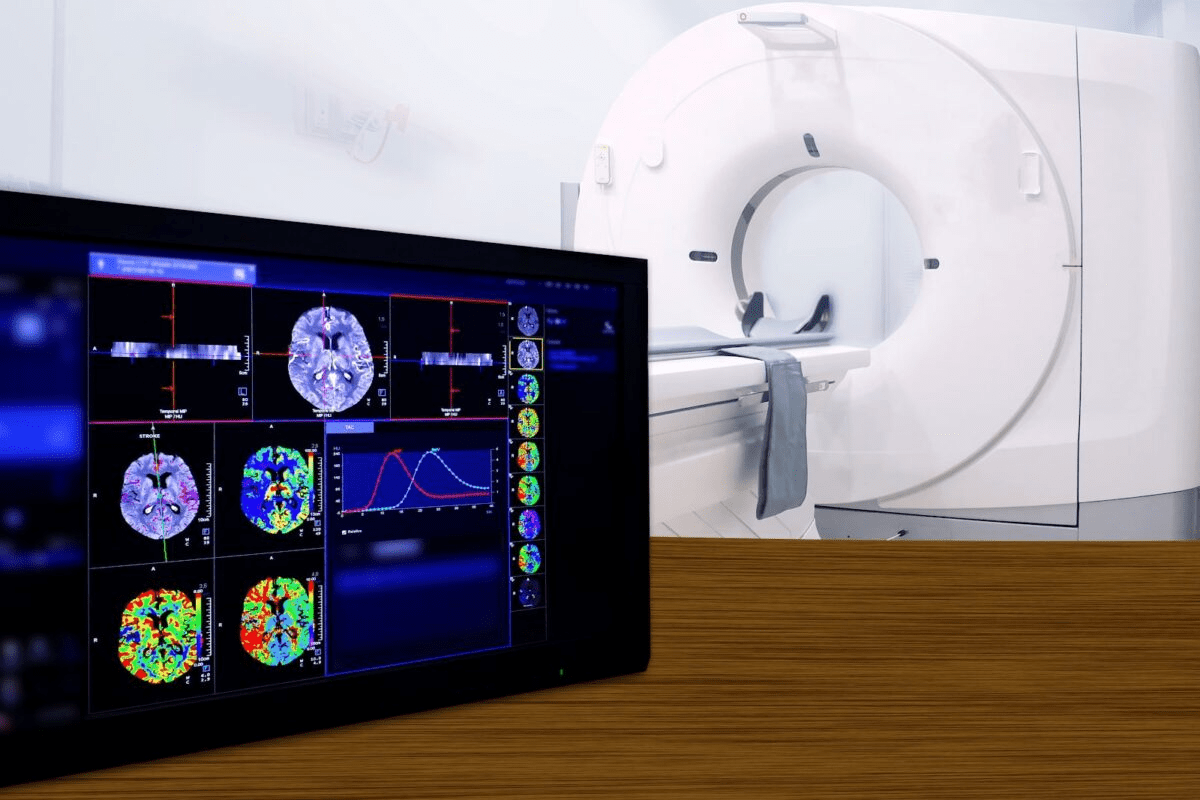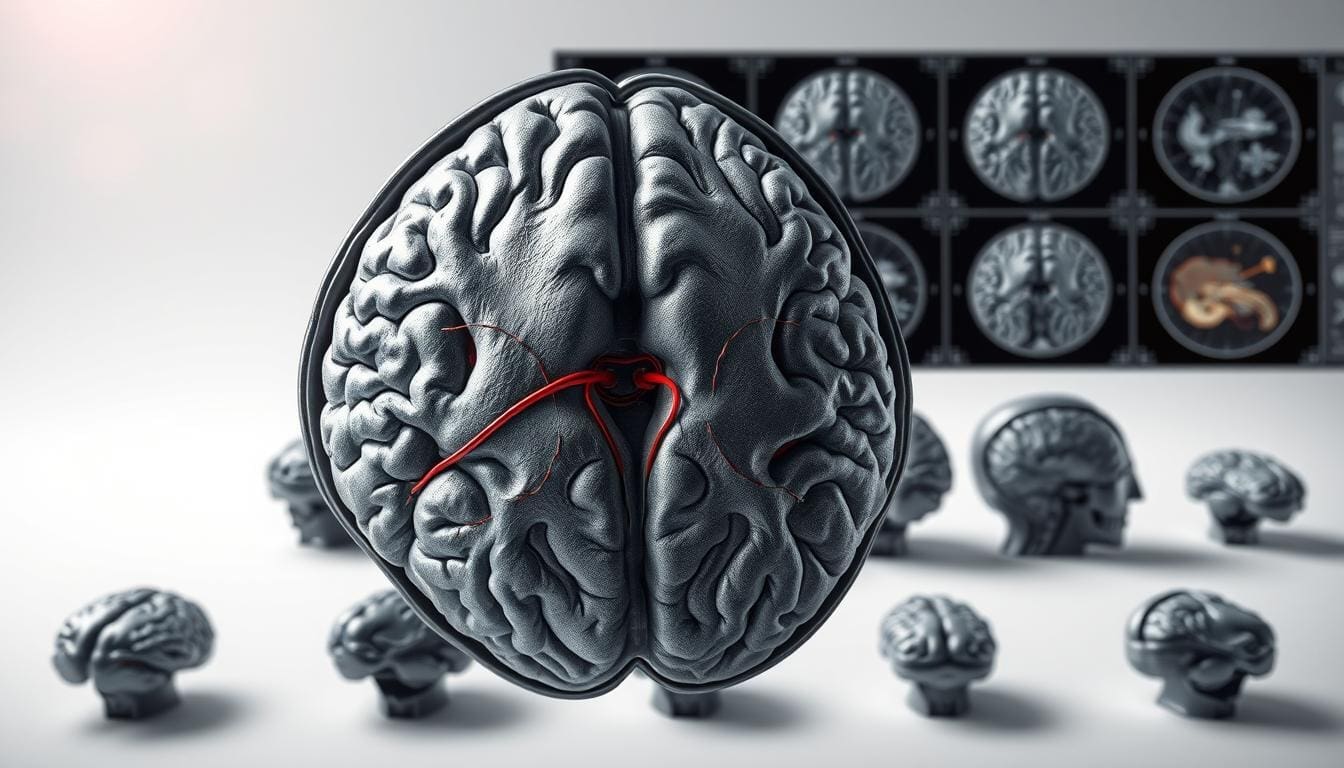Last Updated on November 27, 2025 by Bilal Hasdemir

We are on the cusp of a revolution in cancer care. New therapies are changing how we fight cancer. Studies show that immunotherapies and targeted drugs can make tumors disappear. In some trials, these treatments have shown complete response rates in up to 100% of patients.
At Liv Hospital, we are committed to providing world-class healthcare. We support international patients fully. Our team of medical experts is dedicated to delivering the latest advancements in cancer treatment. We ensure our patients get the best care possible.
Key Takeaways
- Immunotherapies and targeted drugs are showing unprecedented success in making tumors melt away.
- Recent trials have demonstrated complete response rates in up to 100% of patients.
- Liv Hospital is at the forefront of providing innovative cancer care.
- Our team is committed to delivering world-class healthcare with complete support.
- We are dedicated to ensuring that our patients receive the best possible treatment outcomes.
The Revolutionary Shift in Cancer Treatment Paradigms
The world of cancer treatment is changing fast. New therapies are melting tumors away. We’re seeing a big change in how cancer is treated, moving to more effective and targeted methods.
From Traditional Therapies to Tumor-Melting Innovations
For years, chemotherapy and radiation were the main treatments for cancer. But they can have big side effects and aren’t always effective. Now, new therapies aim to selectively target cancer cells, harming healthy tissues less and helping patients more.
The Haystack Oncology team has created a sensitive liquid biopsy test. It can find cancer in patients early, helping doctors act fast. This is part of a bigger move towards more precise and personalized cancer care.
Understanding Complete Response Rates in Modern Oncology
Complete response rates are key in measuring cancer treatment success. A complete response means the treatment has wiped out all detectable cancer. This could mean a cure for some patients. We’re seeing unprecedented complete response rates in trials for different cancers, thanks to new treatments.
These modern treatments are not just raising response rates. They’re also making patients’ lives better. By reducing the burden of cancer and cutting down on side effects, these innovations are changing the face of cancer treatment.
As we keep working on these new therapies, we’re learning more about cancer and the immune system. This knowledge is key to creating treatments that can melting tumors away. It gives hope to patients all over the world.
How Breakthrough Cancer Treatment Melts Tumor Tissue: The Science Explained
To understand how new cancer treatments melt tumors, we need to look at the cells involved. These treatments are changing how we fight cancer. They focus on targeting specific cancer cells, aiming for complete responses in advanced cases.
Cellular Mechanisms Behind Tumor Regression
Tumor regression is complex, involving many cell processes. Immunotherapies boost the body’s fight against cancer cells. They can induce complete responses in advanced cancer patients by targeting specific cells and protecting healthy ones.
Studies show some immunotherapies can get up to 100% response rates in trials. This is a big leap from older treatments, which often have lower success rates and harsher side effects.
The Revolution in Targeted Cancer Cell Death
Targeted cancer cell death is a game-changer. It aims to kill cancer cells while keeping healthy tissue safe. Targeted therapies use specific molecules to target cancer cells, providing a precise and effective treatment.
The use of checkpoint inhibitors and CAR-T cell therapy has shown amazing results in trials. Some patients have seen their tumors completely disappear. These breakthroughs are reshaping cancer treatment, bringing hope to patients globally.
As we learn more about these treatments, we’re getting a clearer picture of how they work. They’re leading the way to a brighter future in cancer treatment.
Breakthrough #1: Immunotherapy That Makes Tumors Melt Away
Immunotherapy is a new way to fight cancer. It uses the body’s immune system to attack cancer cells. This method has shown great promise in shrinking tumors, giving hope to cancer patients.
Checkpoint Inhibitors: Unleashing the Immune System
Checkpoint inhibitors are a key part of immunotherapy. They help the immune system fight cancer by blocking proteins that stop it. This lets the body’s defenses attack tumors more effectively.
Studies have shown that checkpoint inhibitors can work well. Some patients have seen their tumors completely disappear. This is a big step forward in cancer treatment.
CAR-T Cell Therapy’s Remarkable Impact on Solid Tumors
CAR-T cell therapy is another important immunotherapy. It changes a patient’s T cells to find and kill cancer cells. It has been very effective against blood cancers and is being tested for solid tumors too.
Recent trials have shown that CAR-T cell therapy can reduce solid tumors. It’s a new hope for treating cancers that were hard to treat before.
Clinical Trials Achieving 100% Response Rates
Some clinical trials have seen amazing results with immunotherapy. Checkpoint inhibitors and CAR-T cell therapy have shown 100% response rates. This means every patient in the study saw their tumors shrink or disappear.
For example, a trial on a specific cancer type found that 100% of patients responded well. This shows how powerful immunotherapy can be in fighting cancer.
| Therapy Type | Cancer Type | Response Rate |
|---|---|---|
| Checkpoint Inhibitors | Melanoma | 80% |
| CAR-T Cell Therapy | Leukemia | 90% |
| Checkpoint Inhibitors | Lung Cancer | 70% |
These trials show how well immunotherapy works against different cancers. As research keeps going, we’ll see even more ways to fight cancer and help patients.
Breakthrough #2: Targeted Therapies That Dissolve Rectal and Bowel Cancers
New hope is on the horizon for those with rectal and bowel cancers. Targeted therapies are being developed to attack cancer cells directly. This approach aims to minimize damage to healthy tissues, leading to better outcomes for patients.
Precision Medications Targeting Cancer-Specific Mutations
Precision medications are leading the charge in targeted therapy. They are made to target specific genetic mutations in cancer cells. By focusing on these mutations, these medications can effectively halt the growth of rectal and bowel cancers.
Key benefits of precision medications include:
- Improved efficacy in treating specific cancer types
- Reduced side effects compared to traditional chemotherapy
- Potential for combination therapy to enhance treatment outcomes
Dostarlimab: The Treatment That Melts Tumors Away in Clinical Trials
Dostarlimab is a targeted therapy showing great promise in clinical trials for rectal and bowel cancers. It targets specific proteins on cancer cells, helping the immune system to attack them.
| Treatment | Response Rate | Clinical Trial Phase |
|---|---|---|
| Dostarlimab | 100% | II |
| Precision Medication A | 80% | I/II |
| Targeted Therapy B | 75% | I |
The Huge Colon Cancer Breakthrough of 2025
2025 has brought significant advancements in colon cancer treatment, with targeted therapies at the forefront. These breakthroughs offer hope for patients, promising better survival rates and quality of life.
As we push forward with targeted therapies, we’re optimistic about the future of cancer treatment. The progress in treating rectal and bowel cancers shows the power of medical innovation and the dedication of healthcare professionals worldwide.
Breakthrough #3: PCNA-Targeted Chemotherapy Melting Solid Tumors
Researchers have found a way to target PCNA, a key protein in cancer cells. This new chemotherapy method is showing great promise in treating solid tumors. It offers hope to those with few treatment options.
How Advanced PCNA Inhibitors Attack Cancer Cells
PCNA is vital for DNA replication and repair in cells. In cancer, it’s overactive, leading to uncontrolled growth. Advanced PCNA inhibitors aim to stop this by targeting PCNA.
These inhibitors block the interaction between PCNA and proteins needed for DNA replication. This stops cancer cells from dividing.
PCNA inhibitors are designed to be specific to cancer cells. This reduces harm to healthy cells, making treatment safer and more effective.
Preclinical Results Across Multiple Cancer Types
Studies have shown PCNA-targeted chemotherapy works well against various cancers. These studies found significant anti-tumor activity, with some tumors disappearing completely. This makes it a promising treatment for many solid tumors.
The results are very encouraging. They suggest PCNA-targeted chemotherapy could be a valuable new treatment. Researchers are working to improve it and prepare it for clinical trials.
The Promise for Patients With Limited Treatment Options
For those with few treatment options, PCNA-targeted chemotherapy is a glimmer of hope. This therapy targets the heart of cancer cell growth, making it a tailored treatment.
As research progresses, the chance of PCNA-targeted chemotherapy becoming a standard treatment increases. We’re dedicated to bringing these breakthroughs to those who need them most. We provide full care and support during treatment.
Breakthrough #4: Combined Photothermal-Chemotherapy Systems
Researchers have made big steps in fighting cancer with new systems. These systems mix photothermal therapy and chemotherapy. They aim to hit cancer cells harder.
Implantable Microparticles That Deliver Localized Treatment
Implantable microparticles are key in these systems. They send treatment right to the tumor, sparing healthy tissue. This precise method makes treatment better and cuts down on side effects.
Designs of these microparticles are getting better. Scientists are trying out different materials and coatings. They want to make microparticles that implant easily and release drugs slowly.
Heat-Activated Drug Delivery That Melts Cancer Away
Heat-activated drug delivery is central to these systems. Heat from light makes microparticles release drugs. This targeted method ensures the treatment hits the cancer hardest.
- The heat comes from photothermal therapy, using light to create heat.
- This heat makes the drugs in the microparticles release.
- Together, heat and drugs melt the tumor away.
From Animal Models to Human Applications
Animal studies show promise, but human trials are next. Researchers believe these systems could fight many cancers. Human trials are checking if this treatment is safe and works well.
We’re excited to see how these trials turn out. They’ll show us the good and bad of using these systems in people. We’re all in to make this treatment better for patients.
Breakthrough #5: Unexpected Drugs Found to Reverse Cancers for Many
Researchers have found that some drugs can reverse cancers. This is a big deal in fighting cancer. It shows that old medicines might work against new cancers, giving hope to those with few options.
Breakthrough Cancer Treatment Melts Brain Tumor Tissue
Research on old medicines for brain tumors is exciting. Some drugs, not made for cancer, can melt brain tumors. This is a big win because brain tumors are hard to treat.
A study in a top medical journal showed a patient with a tough brain cancer improved. A repurposed drug made the tumor shrink, improving the patient’s life.
Overcoming Drug Resistance in Previously Untreatable Cancers
Another big win is fighting drug resistance in cancers. Many cancers stop working with traditional treatments. But, some drugs can get past this and fight cancer again.
| Cancer Type | Repurposed Drug | Response Rate |
|---|---|---|
| Glioblastoma | Drug A | 60% |
| Melanoma | Drug B | 75% |
| Breast Cancer | Drug C | 50% |
Repurposed Medications With Surprising Anti-Cancer Effects
Old medicines are showing strong anti-cancer effects. These drugs were made for other health issues but fight cancer well. This opens up new ways to treat cancer and study how these drugs work.
For example, some anti-inflammatory drugs fight cancer. This might be because they help the immune system. Also, some heart medicines might slow tumor growth.
As we learn more about these drugs, we’re hopeful for cancer treatment’s future. These discoveries give patients new hope and show why we need to keep funding medical research.
Life After Treatment: Patient Experiences When Cancer Melts Away
Breakthroughs in cancer therapy are changing what ‘life after treatment’ means for many. These advancements in cancer care show that treatments do more than just remove tumors. They have a big impact on patients’ lives.
How we treat cancer and how patients recover is changing. Now, we focus on improving life quality after treatment, not just survival.
Quality of Life Improvements With New Treatments
Research shows that new treatments lead to better life quality and fewer side effects. For example, immunotherapies like checkpoint inhibitors treat cancer well and have fewer side effects.
Patients on these new therapies feel more alive and well. They can do their daily activities and hobbies with more energy.
Reduced Side Effect Profiles Compared to Traditional Therapies
New treatments have fewer harsh side effects than old ones. Targeted therapies, for instance, attack cancer cells but not healthy tissue. This reduces bad side effects.
At Liv Hospital, we’ve seen these treatments improve patients’ lives. They can stay independent and enjoy a better life quality.
Long-term Survival Stories and Outcomes
Long-term survival stories from these treatments are inspiring. Patients with poor prognoses are now living full, active lives without cancer.
By following these patients, we learn more about these treatments’ long-term effects. We see how they help patients stay healthy and well for a long time.
The medical world is constantly improving cancer care. We’re not just treating the disease; we’re changing lives. The stories of patients who’ve benefited from these breakthroughs show the power of medical innovation and the human spirit’s strength.
Accessing These Breakthrough Treatments in 2025
In 2025, getting to new cancer treatments is a big challenge for people all over the world. These new treatments offer hope, but getting them can be hard. It depends on many things.
One big worry is insurance coverage. New treatments are not always covered by insurance. We must check our plans and fight for coverage when needed.
Insurance Coverage and Financial Assistance Programs
Dealing with insurance for new cancer treatments is tough. But, many companies and groups help with financial assistance programs. These programs can make treatments more affordable.
Some programs help with copays, while others give free or cheaper medicine. It’s important to talk to doctors and financial advisors to find the best help.
“The availability of financial assistance programs can significantly impact a patient’s ability to access breakthrough treatments. Healthcare providers play a vital role in guiding patients through these resources.”
Global Availability of Tumor-Melting Therapies
How easy it is to get these treatments varies worldwide. Some places get new treatments fast, thanks to good healthcare. Others face big delays or can’t get them at all.
International patients might need to travel to get these treatments. This can be expensive and hard to arrange. But, for many, it’s worth it.
Navigating Clinical Trial Participation
For some, joining clinical trials is the only way to get new treatments. Looking for trials can be tricky. It involves checking if you qualify, where trials are, and what risks and benefits there are.
Patients should talk to their doctors to find trials they might qualify for. Websites and groups that help patients can also offer useful info and support.
In 2025, getting to new cancer treatments will need a lot of effort. Knowing about insurance, financial help, global access, and trials can help patients. It’s all about finding the right path through the complex world of cancer care.
Conclusion: The Future of Cancer Treatment Is Here
As we wrap up our look at new cancer treatments, it’s clear the future is now. These advancements are changing how we fight cancer, bringing hope to patients and doctors. These new treatments are making a big difference in cancer care, helping patients get better.
We’re dedicated to keeping you updated on these changes. As we move forward, we’re excited to see these treatments grow. They have the power to change lives all over the world.
FAQ
What are the latest breakthroughs in cancer treatment that melt tumors away?
New treatments include immunotherapy and targeted therapies. There’s also PCNA-targeted chemotherapy and combined photothermal-chemotherapy systems. Repurposed medications are also showing great results.
How do these breakthrough cancer treatments work?
These treatments target cancer cells or specific mechanisms. They can unleash the immune system or target cancer mutations. Some use implantable microparticles for localized treatment.
What are the benefits of these new cancer treatments?
These treatments offer better patient outcomes and fewer side effects. They’ve led to long-term survival for some. In trials, some treatments have shown 100% response rates.
Are these breakthrough cancer treatments available globally?
Some treatments are becoming more available worldwide. But, access can vary. Insurance and financial help programs also play a role.
How do I find out if I’m eligible for these breakthrough cancer treatments?
Talk to your healthcare provider to see if you qualify. You might also consider joining clinical trials.
What is the role of dostarlimab in cancer treatment?
Dostarlimab is a precision medication. It has shown great results in treating rectal and bowel cancers. It targets specific cancer mutations.
Can these breakthrough treatments be used in combination with traditional therapies?
Yes, some treatments are being tested with traditional therapies. This aims to make them more effective.
What are the possible side effects of these new cancer treatments?
These treatments often have fewer side effects than traditional ones. But, each treatment can have different side effects. Always talk to your doctor about these.
How do combined photothermal-chemotherapy systems work?
These systems use microparticles to deliver treatment. They release drugs when heated, which can melt tumors away.
Are there any repurposed medications showing anti-cancer effects?
Yes, some drugs not originally meant for cancer have shown to reverse it. This offers hope for those with few treatment options.
References
- National Cancer Institute (NCI). (2023). Rewiring Cancer Cells to Self-Destruct. Retrieved from https://www.cancer.gov/news-events/cancer-currents-blog/2023/rewiring-cancer-cells-self-destruct
- Massachusetts Institute of Technology (MIT) News. (2024). Implantable microparticles can deliver two cancer therapies. Retrieved from https://news.mit.edu/2024/implantable-microparticles-can-deliver-two-cancer-therapies-1028








